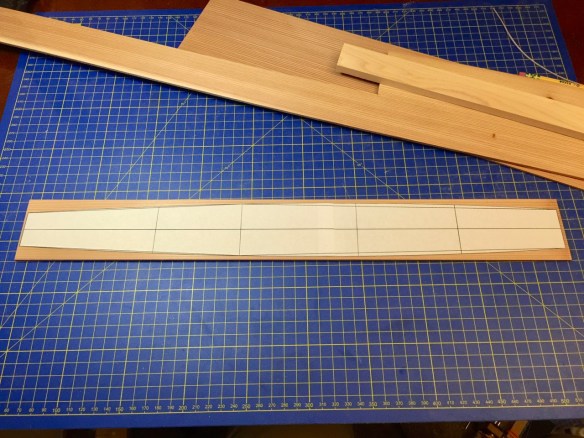I’m going to keep this posting short, as it’s kind of a major milestone, with the finishing of the boat’s basic hull shape.

The full-sized honryousen completed and on the water. Photo by Benjamin Meader.
With the hull planks, locally called hoteita (ho-tey-ee-tah), glued into place, the bottom edges of the hull planks were easy to trim, as they just had to be flush with the bottom. For the top edge, I had some measurements to go by, and I used thin strips of wood to use as battens, clamping them into place along the inside of the hull. The top edges of the battens marked the top edges of the hull planks.
With the battens clamped in place, I made adjustments to the height at various locations along the hull. But, the most important thing was to make sure it was a fair curve, Once satisfied with the curves, I marked the hull planks with a pencil line drawn along the top edge of the battens, then started the process of whittling the wood down to that line.
I used a large hobby knife to trim away the bulk of the excess, paying close attention to the wood grain, which wood would split along. When most of the wood was trimmed away, I then used the mini-block plane to do the fine shaping. A little final go with a sanding block cleans up any little variation.

The mostly final curve of the hull. In front of the model, you can see my Japanese squares marked in shaku/sun instead of feet/inches. Also, there’s the miniature block plane I used for the fine trimming.
The next steps of the major construction issues are the addition of the single beam of the boat, and the blocks that fit at each end of the boat. The beams are called funabari, but I don’t know the term for the blocks at the ends of the boat yet. Looking into that now.
These parts are made from a lighter-colored wood on the real boat, though I’m not sure of the exact species. For my model, I’ll use hinoki, which I now have a small supply of.










